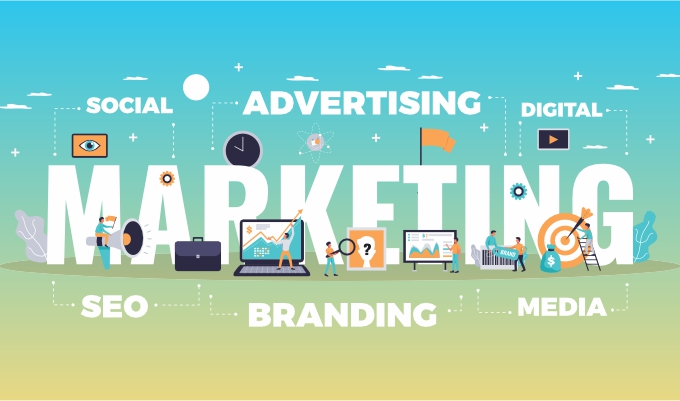
Imagine walking into a store where everything from the décor to the shopping bags screams the brand’s personality as if the brand is talking to you, flirting with you, and interacting with you. That’s the magic of a cohesive brand identity. It’s more than just a logo; it’s the subliminal vibe that makes your brand unforgettable. Let’s dive into how we can create a cohesive brand identity through graphic design that truly resonates with our brand objective.
1. Understanding the Heartbeat of Your Brand
What’s Your Brand’s DNA?
Think of your brand as a living, thriving entity. What are its core values and mission? What does it stand for, and what is its personality? This DNA is the foundation of your brand identity. It’s like knowing your best friend inside out – you need to understand what makes your brand tick. The first principle is to know what it is about your brand that people should remember.
Pro Tip: Write down three adjectives or nouns that best describe your brand. Are you playful, innovative, or perhaps reliable? Are you an inventor, disruptor, or the leader? These keywords will guide your design decisions and guide the intuition of your consumers toward you.
Know Your Tribe
This isn’t about you. You are just the bridge between your brand and your consumers. Your brand isn’t just about you; it’s also about your audience. Who are they? What do they love, hate, and aspire to be? Deeply understanding your audience helps you create designs that speak directly to them.
Example: If your target audience is eco-conscious millennials, your design choices should reflect sustainability and organic aesthetics.
2. Crafting a Logo That Speaks Volumes
The Face of Your Brand
When we meet someone new, the first things we register are their vibe and personality (Brand DNA) and then their face. Your logo is the face of your brand. It should be unique, memorable, and reflective of your brand’s essence. Think of it as the signature smile that people recognize instantly.
Design Hack: Sketch multiple versions of your logo and get feedback from the Best Graphic Design Institute in Rajkot or a diverse group of people. Sometimes, a fresh pair of eyes can see what you might have missed.
Keeping It Consistent
A logo is not a chameleon; it shouldn’t change its colors every time it appears. Consistency in how and where you use your logo is crucial for brand recognition.
Guideline Tip: Create a logo usage guide that details how your logo should appear on different backgrounds, sizes, and mediums.
3. Color Me Impressed
The Power of Color Psychology
Colors touch the feelings. Colors evoke the emotions. They can make people feel excited, calm, or even hungry (ever wonder why fast-food chains use so much red?). Choose a color palette that aligns with your brand’s personality and their subliminal mission.
Color Insight: Use tools like Adobe Color to create a harmonious palette. Test your colors to ensure they look good both online and in print.
Also Read: The Psychology of Color in Logo Design
Harmony in Hues
Your color palette should feel like a well-coordinated outfit—everything should match even if the colors are in contrast. Select primary, secondary, and accent colors that complement each other.
Example: Look at brands like Airbnb. Their soft, welcoming color palette reflects their mission of creating a sense of belonging.
4. Typography: The Voice of Your Brand
Choosing the Right Fonts
Just like a logo is the face of the brand, typography is how your brand sounds! Typography is more than just letters on a page. It’s the voice of your brand. Are you loud and bold or soft and elegant? Your font choices should reflect this.
Font Tip: Combine no more than two or three fonts—one for headings, one for body text, and maybe one for accents. Tools like Google Fonts can help you find free and versatile typefaces.
Making It Readable
No one likes squinting at tiny, unreadable text. Ensure your fonts are legible across all devices and mediums. Ensure the message you wish people to read a lot is readable not just with words but with presentation.
Hierarchy Hack: Establish a clear hierarchy with font sizes and weights to guide the reader’s eye. Think of it as the GPS for your content.
Also Read: The Role of Illustration in Contemporary Graphic Design
5. Visuals That Tell a Story
The Art of Imagery
A picture is worth a thousand words. Images can convey what words sometimes can’t. Use photos, illustrations, and graphics that align with your brand’s story.
Example: A travel blog might use high-quality, vibrant images of exotic locations to inspire wanderlust.
Consistent Style
Just like your logo and colors, your imagery should have a consistent style. This could be a particular filter, composition style, or subject matter. Only with repetition of authenticity, people begin to trust.
Visual Guide: Create a mood board on Pinterest to gather inspiration and define your visual style.
6. Creating Brand Guidelines
Your Brand’s Rulebook
Think of your brand guidelines as the rulebook for how your brand looks and feels. This should include everything from logo usage to color palettes and typography rules.
Guideline Essentials: Make your brand guide accessible to everyone involved in creating or using brand materials. Regularly update it to reflect any changes or new insights.
Training Your Team
There’s always teamwork behind the dream work. What’s the point of a cohesive brand identity if the team members do not embody that identity and reflect it in their behavior? Even the best guidelines are useless if no one follows them. Educate your team about the importance of brand consistency.
Training Tip: Hold workshops, fun activities, or create online modules to ensure everyone is on the same page.
7. Adapting Across Platforms
Versatility is Key
Trends may come and go, but brands should go on forever. Your brand identity should be like a chameleon – adaptable yet recognizable. Whether it’s a business card or a social media post, your brand should look cohesive even if it adapts to different themes and trends in these transformative times.
Platform Tip: Design adaptable elements that can be easily tweaked for different formats without losing their core identity.
Tailoring to Each Platform
Each platform has its own quirks and audience. Each platform has its reach and capability to enhance your narrative. While maintaining consistency, tailor your designs to suit the specific platform’s best practices.
Example: Social media graphics might need to be more vibrant and engaging, while your website design should prioritize user experience and readability.
8. Evolving Your Brand
Staying Fresh
Brands aren’t static; they evolve. Keep an eye on design trends and be willing to refresh your look to stay relevant. But caution to practice here is to maintain the balance between dynamism and originality. Never lose the original nature in order to surf with the tides.
Trend Watch: Follow design blogs, attend webinars, and engage with the design community to stay updated on the latest trends.
9. Feedback Mechanism
Last but not least, do not grow, think, and execute in a bubble. To avoid your brand becoming a creative whim, customer feedback is crucial. Your audience’s perception is invaluable. Regularly gather feedback to understand what’s working and what’s not. Let your brand reflect two-way communication paths and not echo chambers. It’s frustrating when you get to talk to your customers but they don’t get to reply back.
Feedback Loop: Use surveys, social media polls, and direct feedback to refine your brand identity continuously.
Conclusion
Creating a cohesive brand identity through graphic design is a dynamic, ongoing process. It’s about more than just visuals; it’s about creating an experience that resonates deeply with your audience. By understanding your brand’s core, making thoughtful design choices, and staying adaptable, you can build a brand identity that not only stands out but also stands the test of time.
Remember, your brand identity is a living entity. Nurture it, let it grow, and watch as it becomes an integral part of your audience’s lives. In the words of Lord Tennyson, “Trends may come and products may come and go…but the brand goes on forever!”
Here’s to creating something truly memorable and impactful!
Latest Articles
- All Posts
- Blog
- Graphic Design
- Uncategorized







How to Create a Cohesive Brand Identity through Graphic Design – ArtShala
[url=http://www.gy2kvo041tkw2y968in2z5s5ym84c399s.org/]uzqrdykofc[/url]
zqrdykofc http://www.gy2kvo041tkw2y968in2z5s5ym84c399s.org/
azqrdykofc
How to Create a Cohesive Brand Identity through Graphic Design – ArtShala
tgindvvyd http://www.g4u625o64cjuxy19kuile5ps5d452647s.org/
atgindvvyd
[url=http://www.g4u625o64cjuxy19kuile5ps5d452647s.org/]utgindvvyd[/url]
How to Create a Cohesive Brand Identity through Graphic Design – ArtShala
aqfzwdxnwh
qfzwdxnwh http://www.g9xa369d77e7mu01791a4v994bfplbiqs.org/
[url=http://www.g9xa369d77e7mu01791a4v994bfplbiqs.org/]uqfzwdxnwh[/url]
How to Create a Cohesive Brand Identity through Graphic Design – ArtShala
aqebiqshv
qebiqshv http://www.g3o33y38y6732ebj8fo4f817z3itkt2ps.org/
[url=http://www.g3o33y38y6732ebj8fo4f817z3itkt2ps.org/]uqebiqshv[/url]